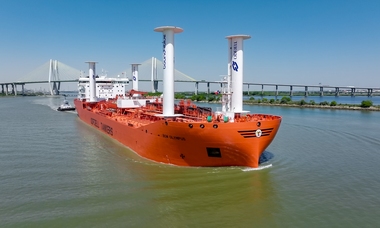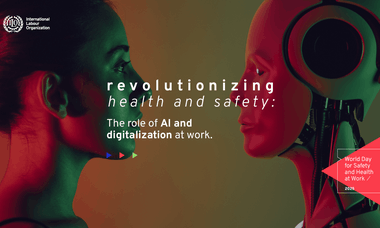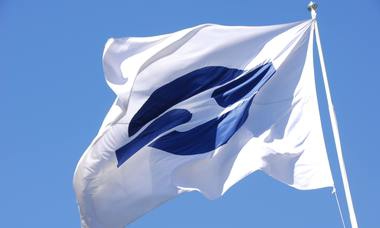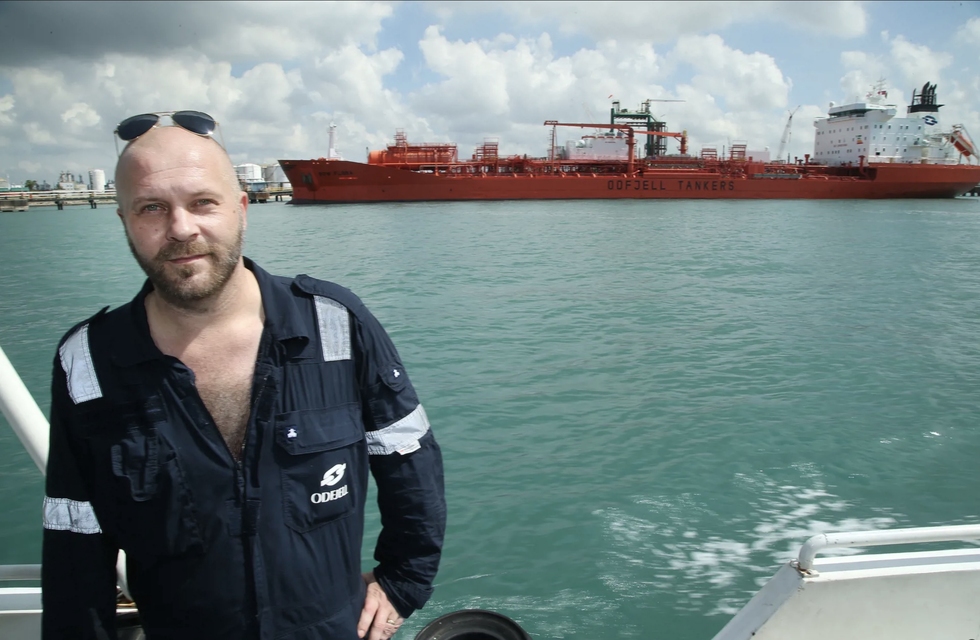
“Why I started sailing? It just happened. You could say that I was born and raised on a boat. My father was a fisherman. It was natural that the sea became my livelihood,” says Odd Arne.
Today, Odd Arne's address is Singapore, but his reach extends beyond the world's busiest port, which has between one and two thousand ship calls every day. Odd Arne is more in the air than on a boat, out on a mission. His work mostly takes place on ships moored in ports around Asia and at the office in Singapore.
We sit and chat in the shade in the harbor while we wait for the taxi boat that will take us out to the chemical tanker Bow Flora. It is Sunday morning. The wind flowing through the windows of the taxi boat feels good. Odd Arne is Port Captain for Odfjell and is underway for a ship visit.
“As Port Captain, you’re contacted for everything between heaven and earth. The work is interesting and varied. You can get involved in much more than you expected,” says Odd Arne.
The previous day, he returned from a mission in Korea.
“The communication between the crew on our ships and a terminal was not optimal. My job was mostly to be present. It went well this time. Then we'll see if things get better in the long run,” says Odd Arne.
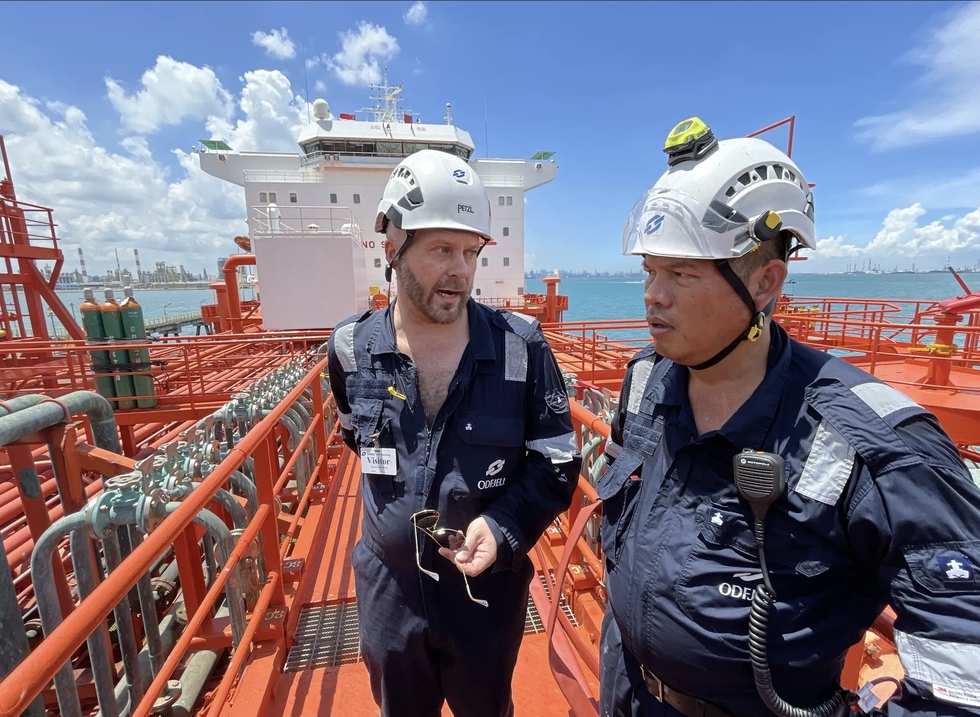
Bow Flora
On the way into the port of Singapore, we pass terminals and ships, with tugboats, taxi boats, and patrol boats passing in between. Bow Flora is newly painted in orange at one of the terminals further out. The chemical tanker appears to be recent.
“Bow Flora was built in Norway by Kværner Florø in 1998. She holds up very well,” Odd Arne says with a touch of patriotism. He sailed on a sister ship of Bow Flora before starting as a Port Captain and knows the ship type well.
The ship is 183 meters long and has a maximum width of 32 meters.
On deck, there are 47 manifolds for 47 tanks. Each tank has a system of pipes, pumps, and valve control. The ship can sail with 47 different loads of chemicals at a time.
Follow-up and maintenance have kept Bow Flora in the market for 24 years. It looks like she will be at work for many more.
“The vessel is solidly built and has good facilities for the crew. Everyone has their own cabin with a shower and toilet. Some customers have age requirements, for example that the ships they charter cannot be more than 25 years old. It's a shame if they don't relax on the age requirements. This ship is far too good to recycle,” says Odd Arne.
Customers who have questioned the age of Bow Flora have received documentation and seen the ship. This has convinced them.
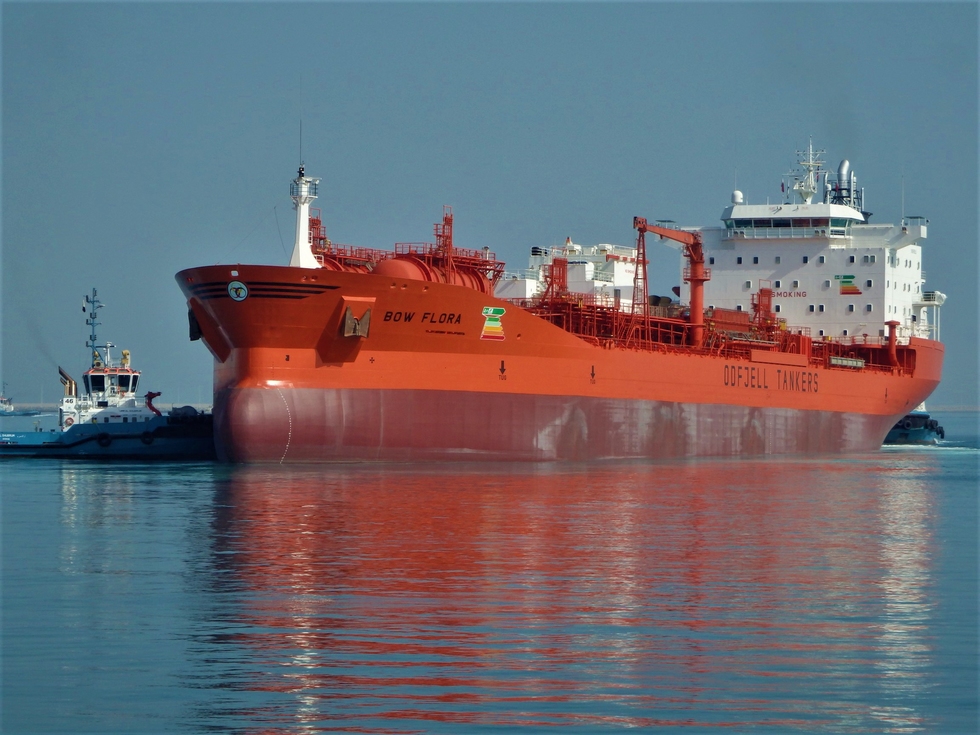
From A to B to C to D…
Captain Mark Henry Arquillano Ilogon welcomes us into the crew lounge and offers cold drinks in the air conditioning.
“The journey from South Africa took 16 days. Sailing the coast of Africa in monsoon season can be exciting, but the weather was mostly calm. No high seas. The weather routing system works. The routing calculates wave heights, wind and currents. It lowers fuel consumption and makes sailing more comfortable,” says Captain Ilogon.
The unloading at the terminal where they are located is the first of five in Singapore.
“We expect to be here for approximately five days. We move from terminal to terminal to unload different chemicals. It is rare that we only call one terminal when we’re in Singapore. With so many loads on a ship, it is not a typical shipment from A to B. In the next phase, we will unload in India and the UAE, and several ports in the Middle East. There is no loading in these ports,” says the Captain.
“We go more from A to B to C to D to E, and then start a new round. It begins by loading chemicals in South Africa. The customer chartered us for this route several years ago,” Odd Arne says.
Captain Ilogon is unsure whether there will be a trip into the city despite the fact that they will be staying for five days in Singapore.
“As a young sailor, I was eager to get ashore. Then we could just walk through the gate and take a taxi into the city center. After September 11, 2001, strict restrictions were introduced in the port. Everything became more difficult. Then the years of corona restrictions came,” Captain Ilogon says.
The crew consists of 26 people, all of whom are Filipino nationals. Odd Arne has sailed with several of them in the past. He starts conversations with a humorous tone. Sometimes, he brings a box of donuts along. Humor and talking about everyday stuff most often end with discussing something relevant for the next leg and port.
“I more evaluate people based on their actions to prevent issues than based on their actions to resolve one. Good conversations can uncover potential situations earlier and avoid problems. It is important to address issues before they become problematic,” Odd Arne says.
He eats lunch with the chief engineer before they go to the engine room. The ship has recently been in drydock in Dubai and has renewed its classification. It is spotlessly clean in every nook and cranny. Much of the equipment that controls the processes on the chemical tanker is also Norwegian-made.
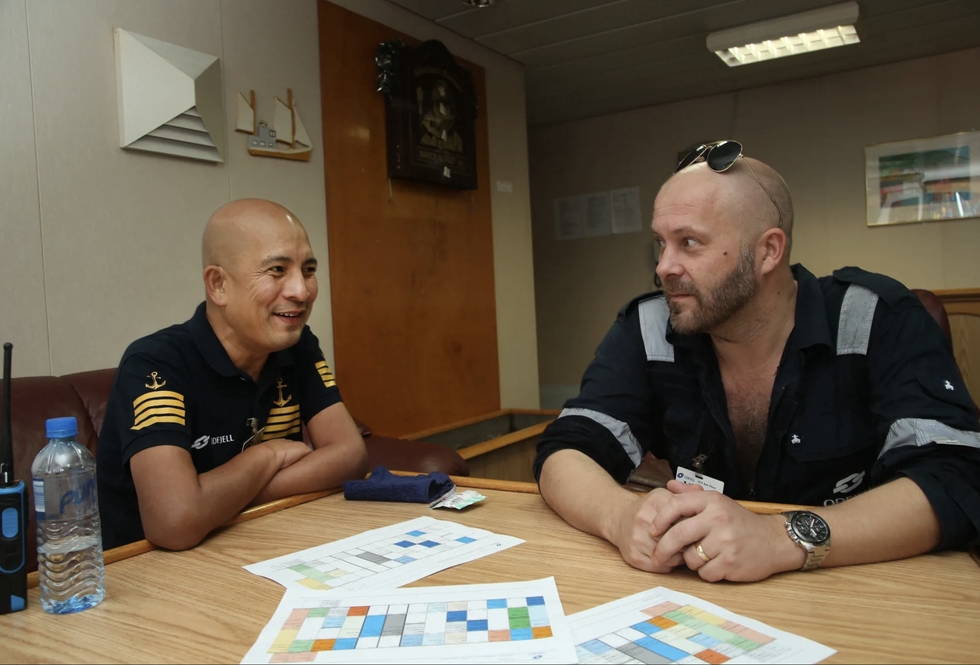
“I get a completely different insight than before. I am in contact with customers, brokers, operators and the crew on board. It gives an overview and understanding of what we can and cannot do,” Odd Arne says.
Lower emissions with new propeller
Bow Flora has a retrofitted energy-efficient propeller that lowers fuel consumption by 20 percent. Frequent inspections and cleaning of the hull below the surface reduce friction. Lights are on only when necessary. Along with weather routing and lower speeds, technology upgrades result in lower emissions and expenses.
“The propeller saves fuel. The downside is that it is somewhat more difficult to maneuver when going backward. But that’s not often needed”, Captain Ilogon says.
He tells about the handling of the ballast water, which is now UV-treated before it is released to avoid releasing harmful organisms into the sea.
Bow Flora has a laboratory for testing the tanks to see if they are clean enough for new cargo and more. With up to 47 different chemicals in the cargo, there is a strict regulatory regime to avoid errors and accidents. Training and competence are keys that must be in place.
"Happy ship – happy crew"
The inspection round on deck takes place under the scorching sun in overalls and with a helmet. One of the chemicals in the cargo, Propylene Oxide, has a boiling point of 34 degrees Celsius and requires cooling.
Port Captain Odd Arne and Captain Ilogon end the ship visit where it started, in the lounge. It's time for a Sunday chat about what the key to a "happy ship" is. "My recipe is open communication, which in turn helps to create harmony among the crew," Captain Ilogon says. "There must be a hierarchy, but you can have a hierarchy without military discipline," Port Captain Odd Arne adds.
He continues: "You have to adapt to each person in the crew and treat them individually, at least to a certain extent."
As Port Captain, he does not sail to the next destination; nevertheless, Captain Ilogon knows how to see him as a resource along the way and in Asian ports.
“A Port Captain is available 24/7 if you need assistance. We play as a team. That's good to know,” the Captain says.
With Bergen towards midnight
After the trip to Korea and the inspection in the port on Sunday, Odd Arne will start work at the office in Singapore on Monday morning.
"When office hours are over in Singapore, the working day starts at our headquarters in Bergen. Information and formalities regarding cargo and other issues are communicated both ways," he says. He worked three years based in Bergen between the years at sea and the job in Singapore.

Read the original article in Norwegian: Fra fiske med far til Port Captain for Asia.
